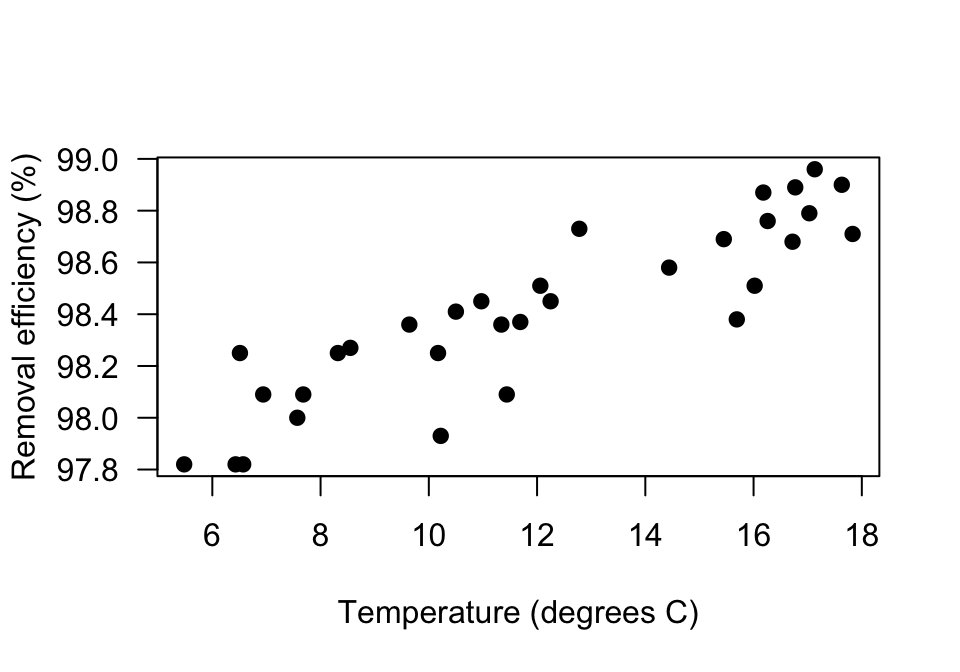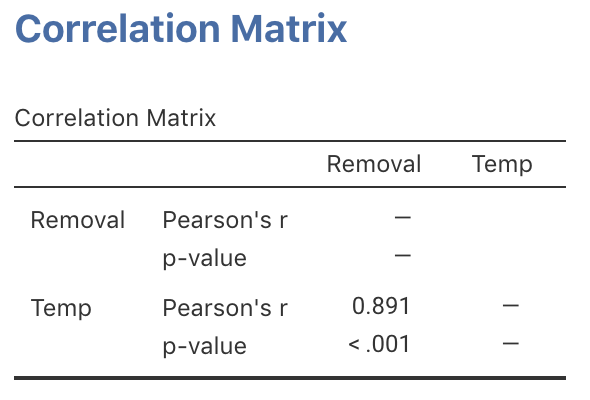34.5 Example: Removal efficiency

In wastewater treatment facilities, air from biofiltration is passed through a membrane and dissolved in water, and is transformed into harmless byproducts. The removal efficiency (in %) may depend on the inlet temperature (in C; ).
The RQ is
In treating biofiltation wastewater, is the removal efficiency associated with the inlet temperature?
The population parameter is , the correlation between the removal efficiency and inlet temperature.
A scatterplot of samples (Fig. 34.8) suggests an approximately linear relationship (Chitwood and Devinny 2001; Devore and Berk 2007). The output (jamovi: Fig. 34.9; SPSS: Fig. 34.10) shows that the sample correlation coefficient is , and so %. This means that about 79.4% of the variation in removal efficiency can be explained by knowing the inlet temperature.

FIGURE 34.8: The relationship between removal efficiency and inlet temperature
To test if a relationship exists in the population, write:
- : ;
- : : Two-tailed (as implied by the RQ).
The software output (jamovi: Fig. 34.9; SPSS: Fig. 34.10) shows that (which is what in SPSS means). We conclude:
The sample presents very strong evidence (two-tailed ) that removal efficiency depends on the inlet temperature (; ) in the population.
The relationship is approximately linear and there is no obvious non-constant variance, and the sample size is larger than 25, so the hypothesis test results will be statistically valid.

FIGURE 34.9: jamovi output for the removal-efficiency data

FIGURE 34.10: SPSS output for the removal-efficiency data